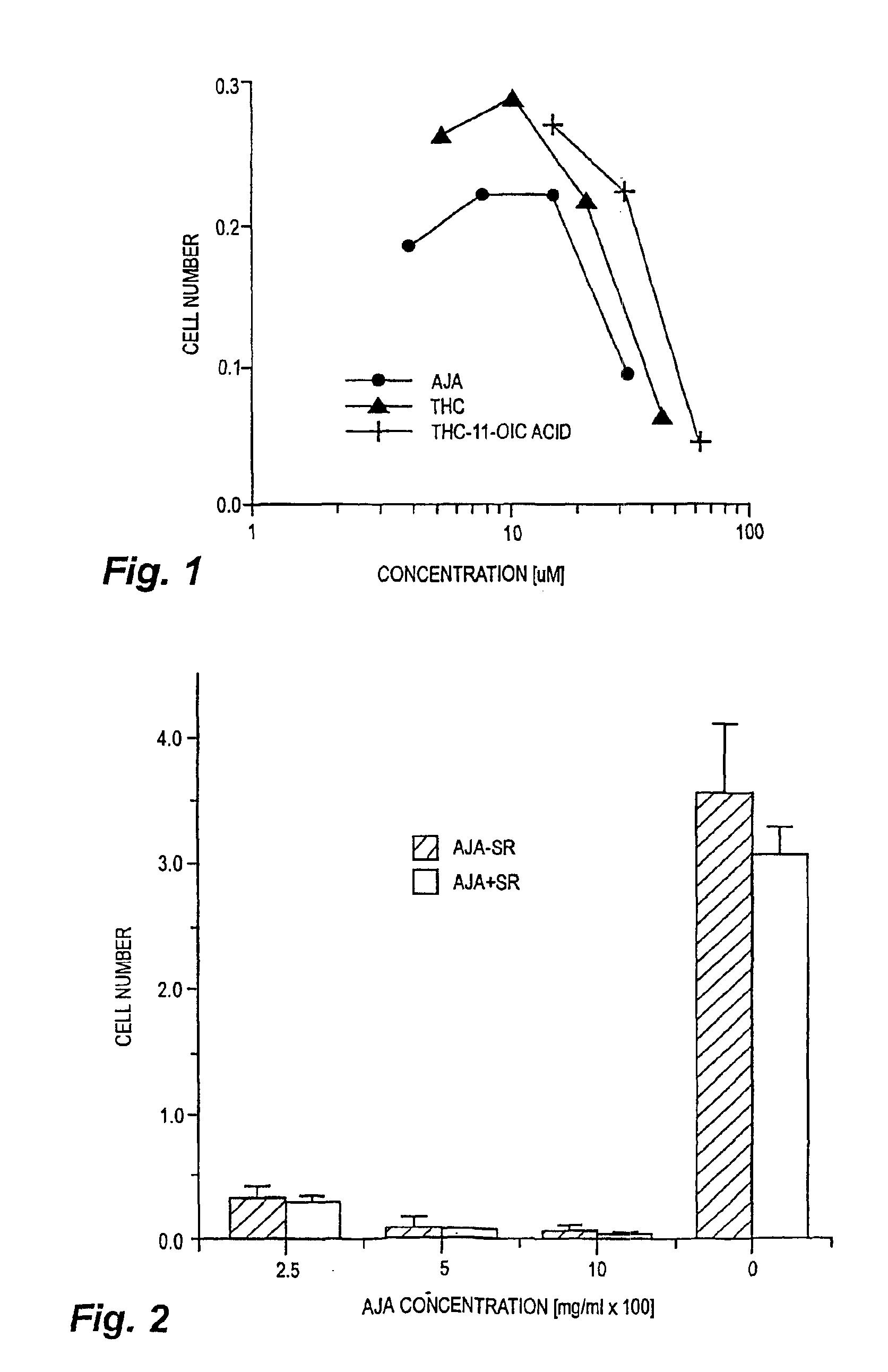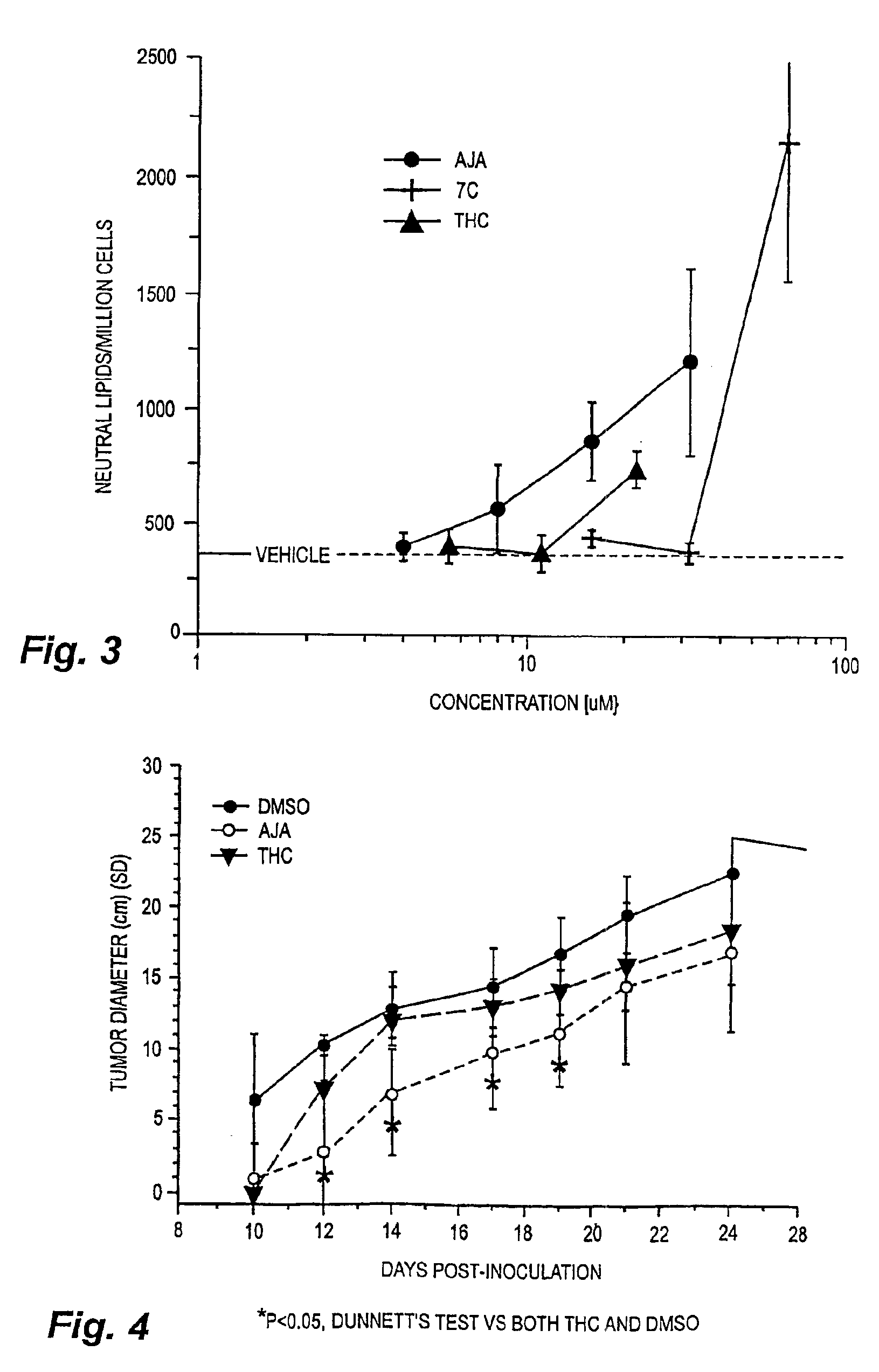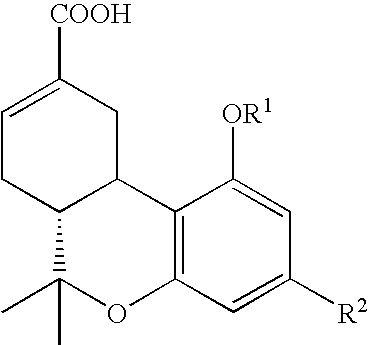Cannabinoid drugs
a cannabinoid and drug technology, applied in the field of cannabinoid drugs, can solve the problems of not being able to inhibit cell proliferation, non-psychoactive derivatives of thc, etc., and achieve the effect of reducing cell proliferation
- Summary
- Abstract
- Description
- Claims
- Application Information
AI Technical Summary
Benefits of technology
Problems solved by technology
Method used
Image
Examples
example
Materials and Methods
[0023]Cells and materials. C6 glioma and U87 glioma cells were obtained from ATCC (Manassas, Va.). Other human lines were harvested and maintained in the Cancer Center Tumor Bank. WI38 cells were obtained from the Tissue Culture Facility of the University of Massachusetts Medical Center (Worcester, Mass.). All chemicals and solvents were obtained from Sigma-Aldrich (St. Louis, Mo.) unless indicated otherwise. THC and THC-11-oic acid were supplied by NIDA. Ajulemic acid was synthesized as described in Burstein et al., J. Medicinal Chem. 35:3185-3141, 1992.
[0024]Cell proliferation assays. In vitro changes in the number of cells were measured using the MTT assay as described in Marshall et al., Growth Reg. 5:69-84, 1995.
[0025]Flow cytometry / cell cycle analysis. For flow cytometry, cells were grown in low serum (0.5%) for two days to synchronize cells in G0 / G1, after which they were placed in high serum (10%) for two days. The cells were then labeled with propidium ...
PUM
| Property | Measurement | Unit |
|---|---|---|
| body weight | aaaaa | aaaaa |
| concentration | aaaaa | aaaaa |
| administration frequency | aaaaa | aaaaa |
Abstract
Description
Claims
Application Information
 Login to View More
Login to View More - R&D
- Intellectual Property
- Life Sciences
- Materials
- Tech Scout
- Unparalleled Data Quality
- Higher Quality Content
- 60% Fewer Hallucinations
Browse by: Latest US Patents, China's latest patents, Technical Efficacy Thesaurus, Application Domain, Technology Topic, Popular Technical Reports.
© 2025 PatSnap. All rights reserved.Legal|Privacy policy|Modern Slavery Act Transparency Statement|Sitemap|About US| Contact US: help@patsnap.com



